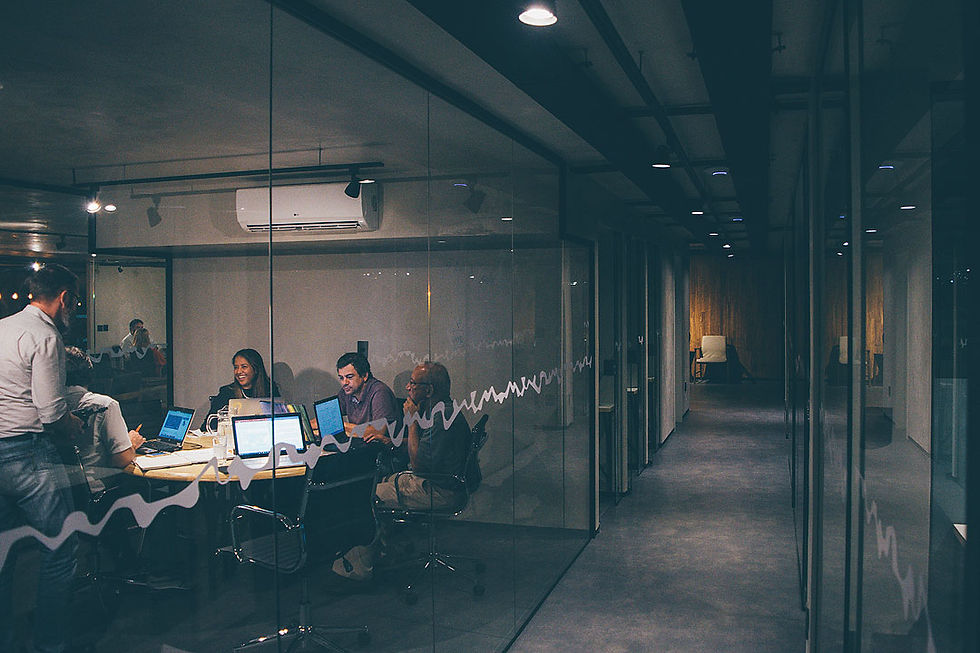Office Workplace Strategy: Taking a Lesson from Retail
- Ziggurat Realestatecorp

- Mar 10, 2024
- 4 min read
As hybrid work now prevails, the office competes for use among employees who have greater choice in determining where they work. An increase in occupier investment in workplace experience and personalization echoes retailer behavior over the past two decades.
Top trends we’re seeing in the workplace, regardless of industry, indicate an increased focus on investing in data to capture employee behavior that informs workplace strategy. This resembles the $200 billion consumer data industry that drives retail strategy.
Three Retail-to-Office Trends:
Creating a memorable experience
Nearly 97% of Gen Z shop at brick-and-mortar stores, with one of the primary drivers being the ability to see, touch and try products, according to ICSC’s Rise of the Gen Z Consumer study. This emphasis on experiencing products and brands in person reflects a redefining of the store’s value. Retail’s shift over the last 10 years from transactional store counters to flagship experiences and concept stores, where brand immersion is the focal point, follows the office evolution from a factory-like production line of the early 1900s to the present-day workplace, a hub of brand and cultural immersion.
With 90% of companies adopting hybrid work, occupiers are striving to define the value of the office. Overwhelmingly, workplace investment has prioritized employee connection, with an over 50% increase of office space allocated to collaboration. The emphasis on collaboration redefines the purpose of the office into a space for companies to reinforce their brand, culture and values with employees.
We expect to see continuing evolution of work, with leading organizations investing in not just collaboration spaces, but true placemaking experiences and the creation of memorable moments.
Tracking foot traffic
With online retail sales forecast to surpass brick-and-mortar by 2033, retail companies are starting to measure the success of their stores by foot traffic and conversion rates as much as revenue dollars. Retail executives are realigning their metrics to reflect omnichannel operations rather than traditional store-only models. Similarly, office space planning has shifted to measuring in-person utilization and, increasingly, vibrancy—the tipping point in the ideal number of employees in an office at any given time—instead of traditional $/sq. ft. occupancy metrics.
As retailers monitor not just foot traffic, but more importantly when and how customers are spending time in store, they are able to convert more traffic into sales. This detailed data is used to define a store’s value, capture customer behavior and, ultimately, influence buying habits.
In parallel, offices in a hybrid work environment measure daily foot traffic, with utilization rate—the rate at which employees enter the office per day—the top metric tracked for office occupancy over the past two years. However, like retail, data on people merely showing up at the office is not where value is driven. Instead, vibrancy is increasingly the most important measure of office value.
Tracking vibrancy allows businesses to take more strategic targeted actions with outsized impact on employee experience. Organizations that can look beyond how often vibrancy occurs and instead prioritize how to establish vibrancy within their workplace will see higher employee engagement, cultural alignment and ultimately greater value in their real estate.
Using data for personalization
The onset of internet ad sales in 1994 revolutionized how retailers understand their customers. Online advertising has transformed the retail industry’s ability to track customer behavior and consequently offer personalized experiences and product selection. Similarly, the recent adoption of hybrid working at a global scale has left occupiers seeking data to capture employee behavior and influence employee decision-making through personalization.
Retail’s investment in ad sales is projected to account for 25% of all digital media spending by 2026. This investment in customer data has allowed global retailers to understand which brands would appeal most to individual consumers and why, creating personalized shopping experiences. The focus on personalization has increased customer satisfaction by 20% and consequently revenue.
In offices, however, data is often not captured by tracking employee behavior and instead may be comprised of self-reported data, leading to inaccuracy. Some organizations are giving employees choice and control, offering a variety of space types in the office. However, to truly understand what drives employee behavior, better data will need to be captured to facilitate a personalized employee experience in and out of the office.
We expect to see leading organizations invest in smart occupancy management technology that captures behavioral data—such as when, how and how often an employee books a workstation—and encourages employee behaviors—like reminders to come into the office for important meetings or when colleagues they’d like to connect with are in. The market for Integrated Workplace Management Software is anticipated to reach $1.1 billion in 2022 and will grow at a CAGR of 15% to surpass $2.1 billion by 2027.
What’s next for the future of work?
If retail is a harbinger of workplace trends to come, CBRE expects to see the following three key trends to not just improve office work, but to push the boundaries of how work is performed. The business that learns how to truly capture these trends and transform how work is done is the one that will leapfrog ahead.

Source: CBRE





Comments